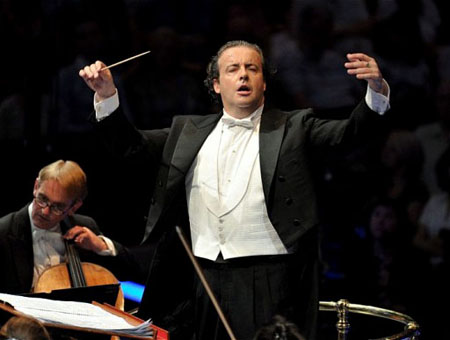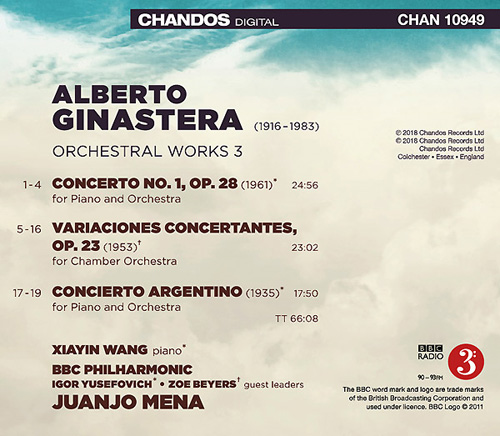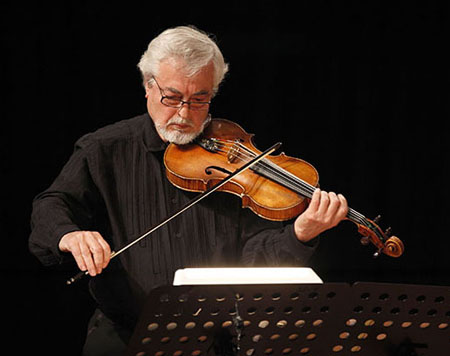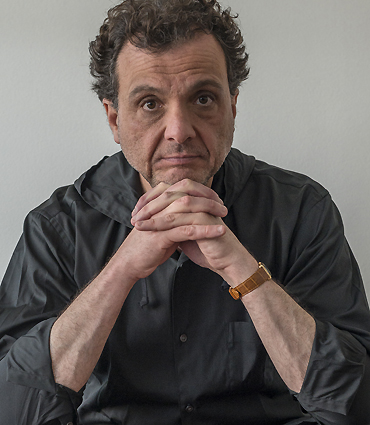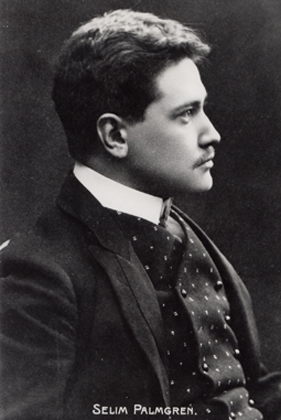No.556
Modern: Tonal
South African-born Malcolm Forsyth became one of the more prominent
Canadian composers from the latter 20th century. He composed mostly in an
accessible style, though he acknowledged another more academic side to his
works. His music often employed folk elements from South Africa, as in
Sketches from Natal (1970) and the First Symphony (1972). After relocating
to Canada in 1968, he began absorbing North American folk styles, noticeable
in such works as Atayoskewin (1984) and in his arrangement, Three M�tis
Songs from Saskatchewan (1975-1976). Stylistically he often exhibited dreamy
and exotic moods, as in his cello concerto, Electra Rising (1995), but he
was rhythmic and jazzy in such compositions as Tre Vie, for alto saxophone
and orchestra (1992). His output includes concertos and orchestral works,
chamber music, songs and choral music. Some of Forsyth's works, like his
Piano Concerto (1974; rev. 1985) and Trumpet Concerto (1987), are gaining
notice in the concert hall, and numerous Forsyth compositions are available
on disc, many on the CBC label.
Malcolm Forsyth was born in Pietermaritzburg, South Africa, on December 8,
1936. In his childhood he studied piano, and later took up trombone and
flute. From 1963, he studied trombone at Cape Town University, where he
stayed on to earn advanced degrees in composition and conducting. His
teachers included South-African born composer Stanley Glasser and conductor
Georg Tintner.
From 1960-1967, Forsyth played trombone in the Cape Town Symphony Orchestra.
Jubilee Overture, for orchestra (1964), is among his most significant
works from this period. After his 1968 move to Canada, Forsyth joined the
faculty at the University of Alberta. He also played trombone in the
Edmonton Symphony Orchestra from 1968, serving as principal until 1980.
In addition, he played in various studio orchestras and brass ensembles
during this period. Meanwhile, he turned out as his Aphorisms for Brass
(1971) and Symphony No. 2 (1976). He also increasingly turned to conducting,
leading the University of Alberta St. Cecilia Orchestra from 1977-1986
and the university's orchestra from 1991-2002.
Forsyth's 1995 Electra Rising: Concerto for cello and orchestra was
written for his daughter, Amanda Forsyth, who premiered the work with the
Calgary Philharmonic Orchestra and later recorded it with the Edmonton
Symphony for the CBC label. In 2002 Forsyth retired from teaching, and
the following year was given membership to the Order of Canada. Among his
later large works was the 2001 Concerto for Accordion and Orchestra. He
completed and saw the premiere of a final work, A Ballad for Canada,
despite suffering from pancreatic cancer.

Music Composed by Malcolm Forsyth
Played by the Edmonton Symphony Orchestra
With Amanda Forsyth (cello) & William Street (alto sax)
Conducted by Grzegorz Nowak
"The most eloquent work on the program (and, happily, the most recent - 1995) is the cello concerto, "Electra Rising," written for
the composer's daughter, Amanda. A mere recital of the movement titles - "Cadenza. With gossamer lightness," "Mayibuye Afrika!
Scherzo-like; strictly rhythmic," "Cadenza. Dramatic," and "Paean. Hymn-like; radiant" - reveals Forsyth's idiosyncratic mind. With
the first movement in particular, one faces with the composer the challenge of a ten-minute "cadenza" - actually, an accompanied
cadenza, much like a similar passage in Elgar's violin concerto - a freely rhythmic song in the solo instrument against mainly a
background of chords. This could easily degenerate into aural soup or the equivalent of nattering, but there really is a symphonic
argument here which the listener can follow without strain. It's also intensely beautiful. The second movement is polyrhythmic
counterpoint in mixed meters. It may also be that individual instruments could be in different meters - for example, 3/4 + 7/8 in
one line and 2/4+5/8+2/4 in another simultaneous line. The opening orchestration evokes for me the sound of the African thumb
piano, although one of symphonic size. Exuberant, the movement celebrates the end of apartheid in Forsyth's birthplace of South
Africa. I catch snatches of African tribal dancing as well.
The second "cadenza" movement somewhat reverses the first. This time the orchestra material mostly takes up the thematic
argument, while the cellist explores all the way the instrument can make chords - strumming, plucking, bowing, arpeggiating,
and so on. Although half the length of the first movement, this cadenza runs the same artistic risk. Yet it comes across as lyrical,
rather than contrived, even though it lacks a "hummable" tune. The finale is essentially another slow movement (the concerto
has three altogether), but this time the soloist gets to sing in the way we associate with the instrument. The composer's indication
"radiant" hits the mark of the music's character.
The composer's daughter and inspiration takes up the solo part, and, far from being Daddy's Little Indulgence, she's probably
one of the most distinguished string players I've heard. A cellist friend of mine once divided cellists into two camps: roughly
Casals vs. Feuermann or Rostropovich vs. Starker - a big tone as opposed to a clear one. I tend to favor the Feuermann,
Fournier, and Starker camp, and Amanda Forsyth belongs there. A student of, among others, William Pleeth, she has mastered
color, dynamics, and phrasing and has a grasp of musical architecture few players achieve in a lifetime. She's still in her
thirties. I wish her a great career.
Valley of a Thousand Hills, a three-movement evocation of South African landscape and culture, lightens up emotionally.
I've not seen South Africa, so I'm not sure what pictures, if any, the music should bring forth. The most conventionally
descriptive movement is the second, "Mkambathini," the Zulu name for Table Mountain. The music puts it off in the distance
or surrounded by mist. More than that, however, the three movements are all technically "about" ostinato and orchestration.
Despite that description, this isn't minimalist music. It lacks the expanded time-sense of most minimalist work. Development
happens within "normal" time frames. Nevertheless, Forsyth risks stasis with his ostinati, although he always knows when
to move on. Furthermore, he uses the patterns to create something new and expressive. For example, the striking opening
of the first movement, "Horizons," builds the music before your very ears, as the main theme looms out of wispy fragments
and becomes a buoyant dance. Forsyth also constructs a nifty transition between the second and third movements, the latter
called "Village Dance." Here we get Crestonian cross-rhythms in unusual meters (according to the liner notes, 17/8).
Forsyth scores so clearly that we actually hear each contributing strand to the polyrhythm. Nowak and the Edmonton
Symphony do a very good job with these.
The saxophone concerto is also a bit of an odd duck. Conceived in three movements, each inspired by one of the Roman
highways (Appian, Flaminian, and Salarian), it wound up with four. During its composition, Messiaen died, and Forsyth
wrote a second-movement homage. Forsyth's music isn't particularly Messiaenic, but perhaps Forsyth simply wanted to
acknowledge the passing of an influential figure, one who touched the musical thinking of so many after the Second
World War."
Classical Net

Source: CBC Records CD (my rip!)
Format: mp3(320k), DDD Stereo
File Size: 173 MB (incl. cover)
Download Link (mp3) -
https://mega.nz/#!9PIHTRiB!Mmki4sjE_N4fSmYWiP_Y4Cf_q3CfX0qIrulORLKTcGA
Enjoy! Don't share! Buy the original! And please click on "Reputation" button if you downloaded this album! :)












































































































































































